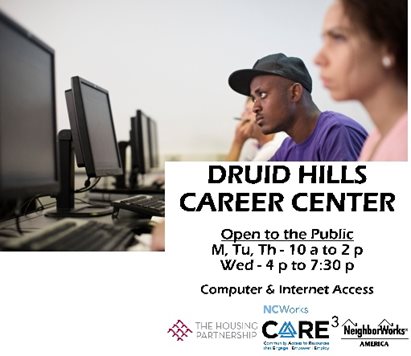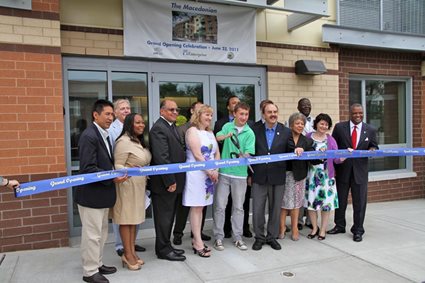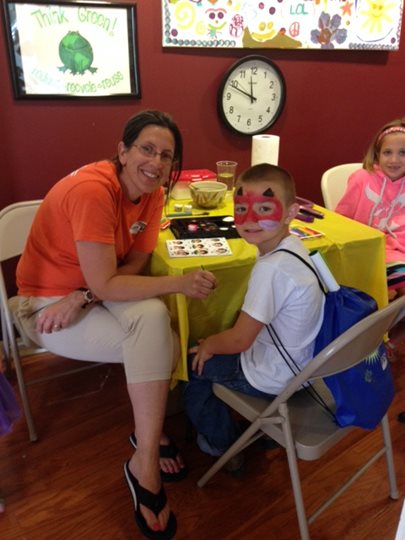Partnerships are the lifeblood of community development, but one type of potential collaborator that tends to be an untapped resource are local faith-based organizations and institutions.
“We often look these communities as viable partners because of deeply ingrained lessons on the separation of church and state, codified by our founding fathers,” notes the U.S. Department of Justice in a toolkit for engaging with faith-based organizations. “But they have significant competence and knowledge to contribute, born of a history of providing services and supports. They provide access to their communities—entrée for outsiders to the many cultures that make up our nation—because they are trusted.”
Partnering for find jobs for residents
 Collaborations with faith-based organizations and institutions, whether it be a church, synagogue, mosque or organization like the Salvation Army, can take many forms. For example, NeighborWorks member Charlotte-Mecklenburg Housing Partnership (CMHP) partnered with a church in its targeted neighborhood of Druid Hills, North Carolina, to bring job-readiness training and work placement to a mostly low-income population. (Almost half are below the poverty line.)
Collaborations with faith-based organizations and institutions, whether it be a church, synagogue, mosque or organization like the Salvation Army, can take many forms. For example, NeighborWorks member Charlotte-Mecklenburg Housing Partnership (CMHP) partnered with a church in its targeted neighborhood of Druid Hills, North Carolina, to bring job-readiness training and work placement to a mostly low-income population. (Almost half are below the poverty line.)In this case, St. Luke Missionary Baptist Church approached CMHP first.
“St. Luke had a desire to be more visible in the greater community,” explains Kim Graham, vice president of community engagement. “So they reached out to us about getting involved in community development work. We brainstormed to help them connect the dots between their capacity, our own offerings and what the broader community needed.”
A significant asset the church could offer is underused space—a computer lab it had created about a decade ago and that had not been used. The equipment was out of date, but the room was available and already wired, plus the entire facility was insured. A light bulb went on.
“We are a recipient of NeighborWorks America’s Catalytic Grant and that injection of significant funding allowed us to be much more holistic in our approach to serving our neighborhoods,” says Graham. “One reality we wanted to confront is that you can’t afford housing or a lot of other things if you don’t have a job.”
So, CMHP brought in a third partner, North Carolina Works—an organization that serves as a “one-stop resource for job seekers and employers,” including training and job fairs. It works both through an online hub as well as “bricks-and-mortar” career centers set up with local partners. And that’s where CMHP and St. Luke came in.
CMHP executed a memorandum of understanding with St. Luke outlining who would do and fund what. St. Luke provides the facility, insurance and some volunteers from the congregation. NC Works provides computers, online resources and placement activities such as job fairs. CMHP staffs it. It’s a win-win-win.
In fact, the partnership has been so successful that CMHP now is planning to expand the services of the center at St. Luke to include a digital literacy program, with the help of a Google Fiber/Knight Foundation grant that is funding a “digital inclusion fellow.”
Combining assets to increase affordable housing
 The Nauck neighborhood in Arlington, Virginia, is the oldest African-American neighborhood in the county. Freed slaves first purchased land and built homes there in 1844. Today, Nauck is still home to many African-Americans and neighborhood institutions, including the Macedonia Baptist Church.
The Nauck neighborhood in Arlington, Virginia, is the oldest African-American neighborhood in the county. Freed slaves first purchased land and built homes there in 1844. Today, Nauck is still home to many African-Americans and neighborhood institutions, including the Macedonia Baptist Church.Established in 1908, the church has deep roots in Nauck and actively funnels its resources into community development initiatives. It made sense, then, for it to partner with NeighborWorks member organization AHC, Inc.
The church had vacant land, the neighborhood needed more affordable housing, and AHC’s expertise is development of just that. The result was the Macedonian Apartments, a 36-unit low- and moderate-income development that was also the city’s first Earthcraft-certified, new- construction, multifamily building. EarthCraft Virginia cited the partners as having “the most energy-efficient multifamily building and some of the best integrated design we have seen in the state.”
“AHC is a leader in green, and we wanted to be part of that as well,” says Macedonia’s pastor, Leonard L. Hamlin Sr. “We wanted a development that fit Nauck, benefitted its residents and could serve as a model for future development. Now we have it.”
Service delivery a natural match
Community Housing Partners of Christiansburg, Virginia, another Catalytic Grant recipient, says it has found faith-based collaborations so productive that about one-third of its 497 partners fall into that category. For example, the faith-based Wave City Care distributes food, provides holiday gifts and mentors middle-school boys in CHP’s Friendship Village Section 8 apartments. And Good Shepherd Baptist Church partners two of CHP’s multifamily properties to offer activities such as yearly back-to-school supply donations, Easter egg hunts and “turkey vouchers” from a local supermarket for Thanksgiving.
For example, the faith-based Wave City Care distributes food, provides holiday gifts and mentors middle-school boys in CHP’s Friendship Village Section 8 apartments. And Good Shepherd Baptist Church partners two of CHP’s multifamily properties to offer activities such as yearly back-to-school supply donations, Easter egg hunts and “turkey vouchers” from a local supermarket for Thanksgiving.“Many faith-based organizations have deep roots in the community and their mission also is serve people in need, which make them outstanding partners,” notes Angie Roberts-Dobbins, vice president of resident services.”
Tips for approaching a new faith partner
At the NeighborWorks’ 2015 Community Leadership Institute, a workshop was held on partnering with faith-based organizations. The instructor suggested that when planning how to approach an organization, first identify someone who can provide a personal introduction. (The hardest part, he said, is getting the initial appointment with the right person.)Once that is obtained, approach the initial conversation this way:
“Don’t go in and say, ‘I need you to help me obtain this grant/fulfill this need. Instead, approach them from a position that highlights shared values. Talk to the pastor in his or her language. Say, ‘Do me a favor. Walk with me in this neighborhood and be God’s eyes, ears and heart today.’ What do you think God would see?”
The idea is to go to them with questions, not answers. Invite them to share what they want to see happen, to see if there is alignment. Arrive at a vision together about what a community needs. Then talk about sponsorships. Then it can be a win-win for everyone.

